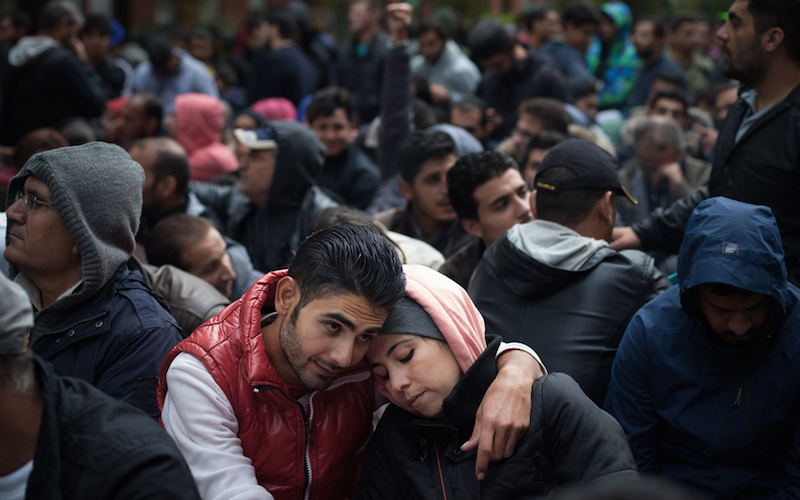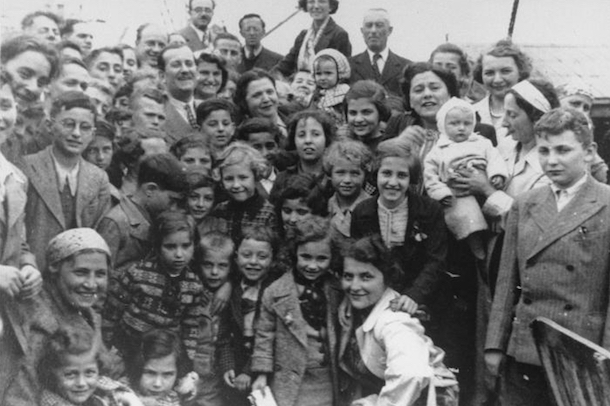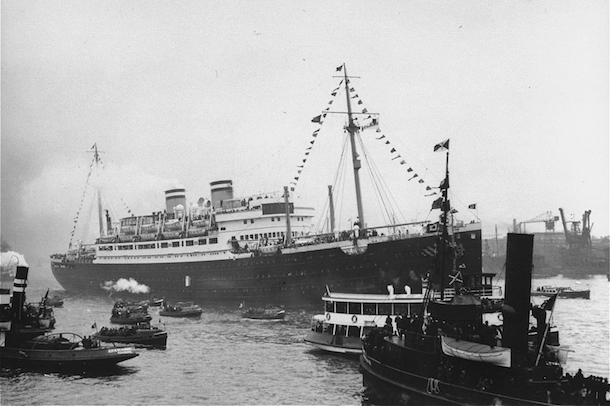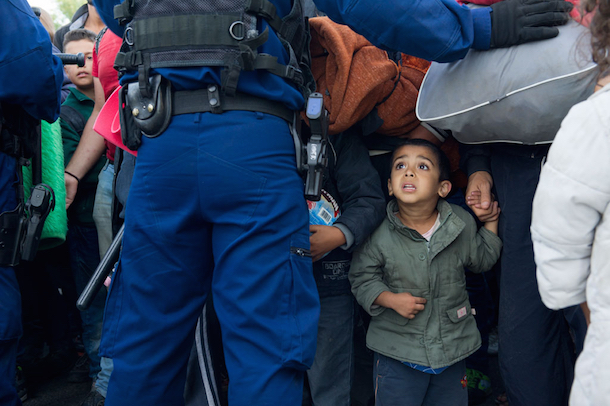
1940s vs. 2015: Will Syrian Refugees Compare to European Refugee Statistics?
The current Syrian refugee crisis has eerie similarities to the immigration crisis America faced over 80 years ago during the 1930s when European Jews were looking for a safe haven from Hitler. In the wake of the terrorist attacks that took place in Paris, American public outcry has forced government officials to tighten immigration quotas from Syrian refugees entering the United States. As history may repeat itself with the newly passed House legislation tightening Syrian refugees from immigrating to the US there is a historical background as to what could be potentially shaping the decisions made by lawmakers in recent weeks.
In 1935 the legal quota for Jews entering the United States was at 25,000 but only 5,532 immigrants were accepted. In 1936 the number rose to 6,642 and finally in 1937 to 11,356 immigrants, but still well under the 25,000-person quota. The 1930s were the days of severe American anti-immigration sentiment and lawmakers in Congress did everything they could to limit the acceptance of foreigners.
A poll taken in 1937 revealed that 67 percent of Americans wanted refugees kept out of the country all together. The public and State Department strongly sent a message to the White House that Europe could fight its own war without American troops, and that we should keep foreigners off of American soil.
Soon after the President’s first public stance on the support of the European war, he announced an increase in immigration quotas. On March 22, 1938 during a press conference, the President announced the merging of the German/Austrian immigration quota, which went in direct violation of Congressional law, by raising the German quota by some two thousand entry spots, even asking 32 other nations to join. But unfortunately he couldn’t do anything about taking refugees into the United States himself, he was only able to exhaust the quotas but in doing so he faced an angry Congress and unsettled public.
New York Mayors Then and Now
During the spring of 1939 New York Senator Robert Wagner and Massachusetts Representative Edith Rogers introduced the Wagner-Rogers Bill. The bill called for ten thousand German-Jewish children to be admitted in 1939 and another ten thousand in 1940. The bill became to be known as the Child Refugee bill and sought to admit German children for a temporary period or until safe living conditions were re-established.

Although the bill was seeking legislation to permit a set number of children only under age of 18 they would have entered outside the quota system enabling others to potentially receive visas. Even though there was an immense immediate response from the public to the bill in the form of letters and rallies, a poll taken soon after the announcement showed that 61 percent were against entry, with 9 percent voicing no opinion.
Senator Guy Gillette and Representative Will Rogers, Jr introduced a non-binding resolution to Congress, which recommended and urged the President to create a commission of diplomatic, economic, and military experts to formulate and effectuate a plan of immediate action designed to save the surviving Jewish people of Europe. The resolution made its way to hearings in the House Foreign Affairs Committee. Several prominent leaders testified including Rabbi Wise, Peter Bergson, New York Mayor La Guardia, and finally Breckinridge Long. Long testified that America had accepted over half a million refugees during Hitler’s regime but in reality only 165,650 European Jews immigrated.
The Gillete-Rogers Resolution received unanimous support from the Senate Foreign Relations Committee and a floor poll in January 1944 looked to insure passage. President Roosevelt had yet to comment either positively supporting or negatively neglecting the resolution.
Did the State Department Do Enough?
Finally, evidence that the State Department had in fact been destroying the chance to save European Jewish lives by allowing them to immigrate to the United States was in the hands of an American Jew himself, Secretary of the Treasury Henry Morgenthau. Morgenthau had received an 18 page memorandum which documented the State Department’s obstructions and conspiracies dating back prior to America’s declaration of war.

The Treasury Department finally uncovered the real reason for procrastination from the State Department. They feared that tens of thousands of Jews might actually be released from territories under German control. The report became known as, “Report to the Secretary on the Acquiescence of This Government in the Murder of the Jews.” The report even accused the State Department of using government tactics and equipment to actually prevent the rescue of the Jews. After the not-so-astonishing evidence had been compiled, Morgenthau realized he had to remove refugee and immigration issues from State Department control, particularly off the desk of Breckinridge Long.
But it was almost too little too late because for so many years the State Department maintained tightened regulations on immigration policies while the Nazis were slaughtering millions of European Jews rather than making the United States a safe haven for those being persecuted.
Journey on the St. Louis & a Homemade Boat
There have been similarities to the current conflict and pre-WWII of outcries in preventing refugees running from persecution whether from ISIS or Hitler. For instance, in the case of the St. Louis, where 900 Jews on board a ship from Germany to Cuba in hopes of migrating were turned away, eventually resulting in their death at the hands of the Nazis. After being denied entry into Cuba, the St. Louis sailed up and down the United States coastline begging American officials to permit the passengers on board the opportunity to gain entry into the country. Of the 938 Jews aboard the ship who forced to return to Europe 40 percent were killed during the Holocaust.

Syrian refugees are crossing borders on a daily basis in hopes to find refuge from the conflict occurring in their homeland. Turkey has been the biggest supporter of refugees by hosting over 2.2 million since the outbreak of the war. The US has only allowed 2,200 Syrian refugees to resettle in America which is a small percentage of those who are in need of help. The newly passed legislation in the House regarding limiting Syrian migration to the US will very much limit refugees from finding safety similarly to the situation in the 1930s with Jewish refugees.
Turkey’s Role in the Refugee Crisis
Over the last four years Turkey has played the biggest role in providing a safe haven for those fleeing persecution. The refugee camps established have provided shelter, food, healthcare, and education to millions of people. This story of overcoming the odds of escaping from persecution over 70 years ago is similar to the present journey of Syrian refugees escaping the horrors of ISIS and the Assad regime. Decades have passed since the United States made it near impossible for European Jewish refugees to find sanction in America but the same scenario is beginning to appear with the new restrictions of migration quotas put in place by the government.
The US has vowed to provide better aide and assistance to Turkey in tackling the refugee crisis which would include opening the doors for more refugees to enter America. The United States government cannot close its doors completely on Syrian refugees much like it did for European Jewish refugees during WWII or the humanitarian crisis will only continue to get worse.

